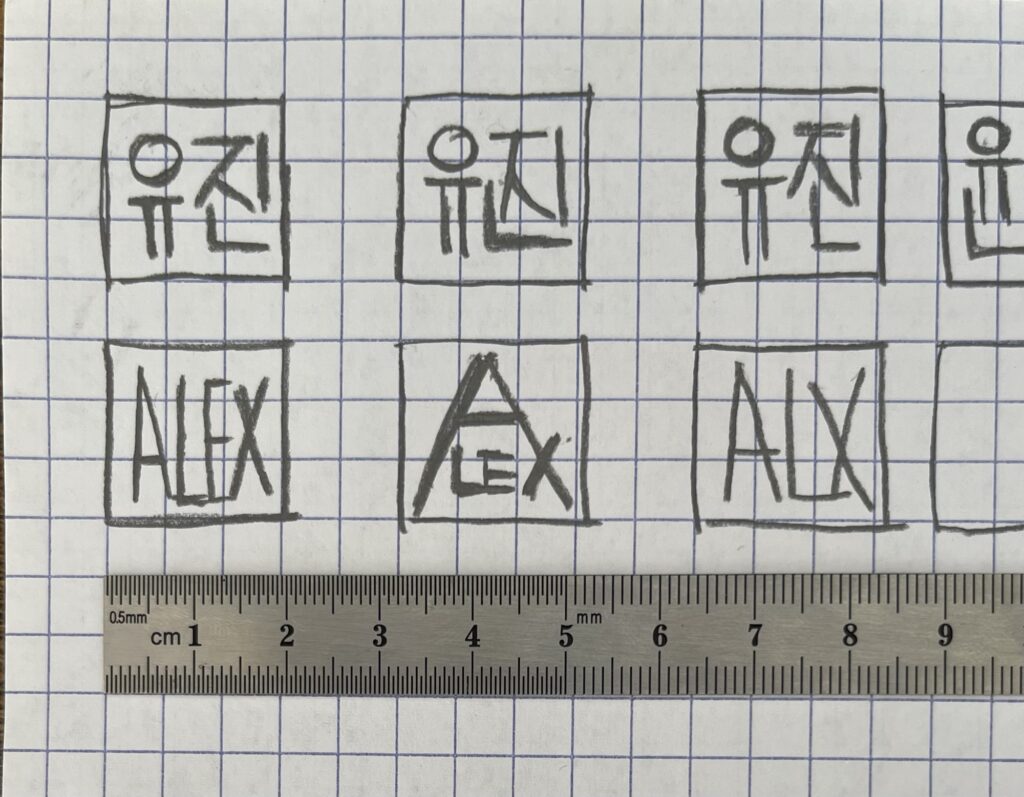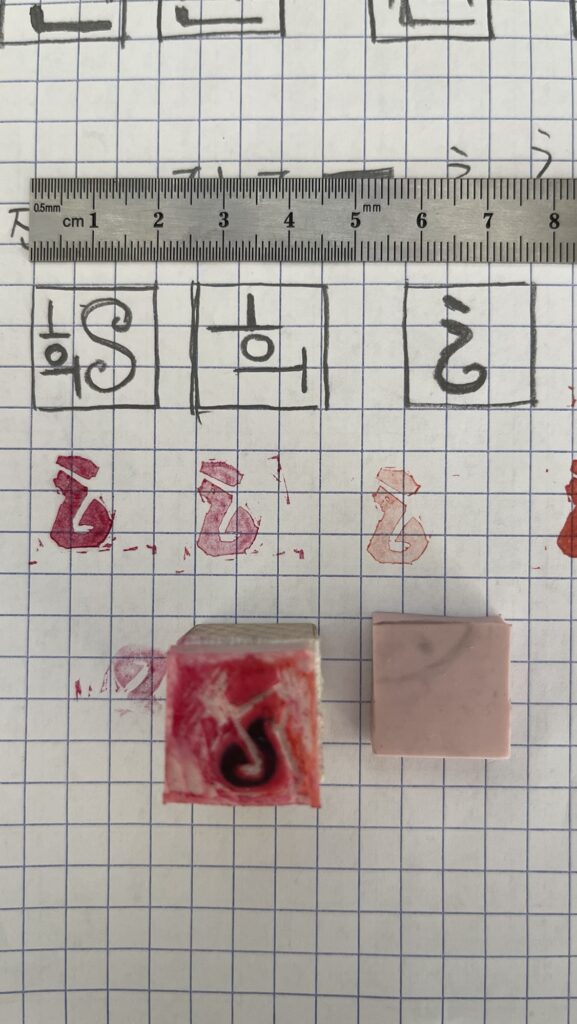For this project, we are looking to fulfill 3 to 5 iteration of the dojang design. For the end of the first session of the dojang workshop, we are looking to create designs using Latin alphabets. We will move to designs in Hangul, Korean alphabet, during our second session.
The design surface is 2 cm by 2 cm; it is 3 by 3 squares on the larger side of the grid paper.

For designing dojang in English (Latin alphabet), I would recommend keeping the letters in low numbers such as initials or diminutive form. Please keep the design legible. If you have a logo design in mind, we encourage to use your design. Simplifying your existing design could provide additional challenge.
Now for designing in Hangul (Korean alphabet).
Most Korean names consist of three syllables, allowing them to fit neatly into small spaces. You might have already gotten your name written out phonetically in Hangul. Feel free to get creative and design something using the syllable blocks you have!
During our second session, I can review your design in Hangul. If you feel more adventurous, you can rediscover how your name would look in Hangul using this Hangul name printout. This will offer crucial guidelines on how much the characters can be modified to match your design preferences.
Wait a mo. I wanna figure it out but I sure can use some hints!
Let’s very briefly discuss the structure of Hangul.
Korean syllables are organized like building blocks, with each letter combining to create square-shaped characters. When creating a syllable block, the consonant is written first, followed by the vowel, which can be positioned above, below, or beside the consonant, creating a distinct visual block for each syllable. The standard stroke order of the characters begins at the top and progresses downward and each character follows a specific sequence of strokes. This structure is essential for making Hangul easy to read and use.
Here is an example, 친구 (chin-gu), Friend. The numbers in red represents the stroke order.

There are three fundamental types of syllable block combinations. There are 11,172 potential Hangul syllable blocks in the Unicode standard, and they all adhere to a specific structural rule. For in depth exploration of rules including pronunciation and resyllabification, you can visit the 90 Days Korean website.

Now that we are towards the end of the design stage, your grid sheet should look something like this, with some design in Hangul and some not.


Once you have finalized your design, it will be reverse transferred as negative or positive relief to the lino block to be carved. I choose to stylize ㅎ (hieut), the 초성 (cho-seong), first character of the second syllable block of my name in positive relief. I also eliminated the traditional border in favor of using it as an initial stamp, more westernized version of dojang.
Now you are ready to use your dojang for a number of things!